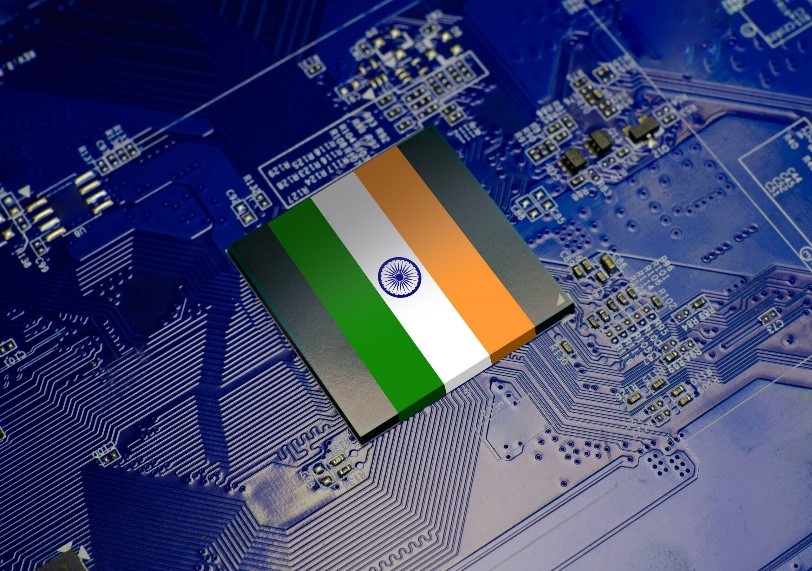
Disclaimer: Copyright infringement not intended.
Context
- India is yet to approve a semiconductor fabrication or production plant.
- And it is key to the government’s ambitious plan of making the country a chips hub in the next five years.
- Some other crucial parts of the chip ecosystem were finalized during the recent PM Modi’s US visit.
Recent Developments
- US Chip maker Micron Technology, a leading manufacturer of memory chips has become the most high profile name to commit investment in India to build a chip packaging plant.
- Other leading names including Applied Materials and Lam Research have announced that they will support research and training programs in the country.
READ A TO Z ABOUT SEMICONDUCTOR INDUSTRY: https://www.iasgyan.in/daily-current-affairs/semiconductor
Challenges faced by India’s semi-conductor Industry
Competition
- It is difficult to compete with neighbouring countries like China and Vietnam which have been favourite destinations for global chip manufacturers due to better cost-efficiency.
Massive investment
- In addition to the huge cost, running in billions of dollars, manufacturing even a single chip requires hundreds of gallons of pure water, which may also be hard to find in India in the required quantities.
Infrastructure
- There have been challenges in setting up of Semiconductor Wafer Fabrication (FAB) units in India.
- India is still not unto the par in terms of the basic infrastructure needed.
Power Supply
- An uninterrupted power supply is another major hurdle.
- The heart of the issue is that India is still not unto the par in terms of the basic infrastructure needed to pursue endeavours in the chip manufacturing space.
Price pressure
- There is also constant price pressure from other global players, particularly China which is also building a homegrown chip program for the adoption of local semiconductors in 70% of its products by 2025.
Dependency on Imports
- India imports 100% of its semiconductors.
- Around 40 percent of India’s demand is met through imports from China, despite the frequent geopolitical impasse that the two nations find themselves in.
|
Global Giants
- Taiwan holds a virtual monopoly in the global chip manufacturing industry.
- The company is responsible for over half of all semiconductor chips that are manufactured in the world, and the country as a whole is responsible for over 60 percent of global production.
- Other major centres include South Korea and the US.
|

Government efforts:
Development of sustainable semiconductor and display ecosystem in the country Programme
- The comprehensive programme for the “development of sustainable semiconductor and display ecosystem in the country” is aimed at making India a global hub of electronic system design and manufacturing.
- The scheme would provide fiscal support of up to 50% of the project cost for setting up semiconductor and display fabrication units.
100% FDI in the ESDM
- In 2016, the government allows 100% FDI in the ESDM sector through an automatic route to attract investments including from Original Equipment Manufacturers (OEMs) and Integrated Device Manufacturers (IDMs).
Electronics development Fund
- The Department of Electronics and Information Technology (DeitY) has established an Electronics Development Fund (EDF) managed by Canara Bank to provide risk capital and to attract venture funds, angel funds and seed funds for incubating R&D and fostering the innovative environment in the sector.
Initiatives under Telecom and Electronic Policies
- Some of the initiatives outlined in the National Electronics policy and the National Telecom policy are in the process of implementation, such as Preferential Market Access (PMS), Electronics Manufacturing Clusters (EMC) and Modified Special Incentive Package Scheme (M-SIPS).
Scheme for Promotion of manufacturing of Electronic Components and Semiconductors (SPECS)
- Ministry of Electronics and Information Technology (MeITy) has drawn up the Scheme for Promotion of manufacturing of Electronic Components and Semiconductors (SPECS).
Production-linked incentive scheme (PLI) scheme
- Under the scheme, the Centre will offer financial support to companies that want to manufacture a range of semiconductor goods in India.
- The subsidy will bring down the production costs of companies manufacturing such goods, and thus encourage them to set up new factories and other facilities.
Why does India need to make chips?
- India has identified electronics manufacturing as a key sector to boost its growth in the coming years by producing goods not just for the domestic market, but also for exporting to the world.
- While some manufacturing schemes, such as that for smartphone manufacturing, have taken off in the country with Apple taking a lead, the entire process is largely centred around assembling various components that are imported from elsewhere.
- India has made chip manufacturing a top priority for India’s economic strategy as it wants to “usher in a new era in electronics manufacturing” by luring global companies.
- It is, therefore, clear that building semiconductors domestically is crucial for the government’s vision to develop a domestic electronics supply chain and eventually reduce its imports from foreign countries, especially China – which despite its own challenges remains to be the number one destination for such manufacturing.
- It is a pressing time for India to venture into electronics manufacturing, with chips being an important part of the puzzle – all electronics items have semiconductor chips in them, and as more companies try to diversify their bases from China, India has an opportunity to emerge as a reliable destination.

Way Ahead
- As 5G mobile networks proliferate with many people working from home, the need for more powerful, energy-efficient chips is only going to grow.
- The rise of artificial intelligence is another force pushing innovation, since AI relies on massive data processing.
- Indian semiconductor industry is set for a stable upsurge with bright prospects provided India's generic obstacles like redtape-ism, fund crunch and infrastructural deficits are adequately addressed.
- Steps needed to be taken:
-
- Land Acquisition by the government: acquire the land and develop a special economic zone (SEZ) which would encompass a complete semiconductor manufacturing ecosystem.
- Cover all ancillaries: The monetary benefits being extended for setting up a fab should be made available for all the ancillary units manufacturing specialty chemicals to clean room apparel.
- Focus on simple technology: The requirements are less stringent and the fabs less expensive. These companies typically operate at much lower gross margins as opposed to the large fabs and Original Equipment Manufacturer (OEMs).
- With the implementation of fabrication capabilities in India, the country could achieve a degree of self-sufficiency in the sector of semiconductors.
Building a strong semiconductor industry would put an end to the country’s reliance on imports to meet its semiconductor needs and will help in the creation of jobs.
|
PRACTICE QUESTION
Q. Building a strong semiconductor industry would put an end to the country’s reliance on imports to meet its semiconductor needs and will help in the creation of jobs. What are the challenges faced by India’s semiconductor Industry? Shed light on the efforts of the Government to address these challenges. Suggest steps that can help in making India the next global semiconductor hub.
|
https://indianexpress.com/article/explained/explained-economics/pm-modi-us-visit-micron-chip-manufacturing-8682097/




